
Research Article
J Dent & Oral Disord. 2021; 7(2): 1158.
Comparative Analysis of the Shear Bond Strength of Flowable Self-Adhering Resin-Composites Adhesive to Dentine with a Conventional Adhesive
Asiri AA1, Khan R2*, Alzahrani SS3, Haider S4*, Ud-Din Khan S5, Asiri EAM6, Alamri MF7 and Ahmad A8
1Ministry of Health, Jeddah Specialty Dental Center, Saudi Arabia
2Engineer Abdullah Bugshan Research Chair for Dental and Oral Rehabilitation, King Saud University, Saudi Arabia
3Jordan University of Science and Technology, College of Dentistry, Saudi Arabia
4Department of Chemical Engineering, College of Engineering, King Saud University, Saudi Arabia
5Sustainable Energy Technologies (SET) Center, College of Engineering, King Saud University, Saudi Arabia
6King Khalid University, College of Dentistry, Saudi Arabia
7Al-Farabi College of Dentistry and Nursing, Saudi Arabia
8Department of Chemistry, College of Science, King Saud University Riyadh, Saudi Arabia
*Corresponding author: Rawaiz Khan, Engineer Abdullah Bugshan Research Chair for Dental and Oral Rehabilitation, College of Dentistry, King Saud University, Riyadh 11545, Saudi Arabia
Received: March 06, 2021; Accepted: April 06, 2021; Published: April 13, 2021
Abstract
This study aimed to measure and compare the Shear Bond Strength (SBS) of a self-adhering flowable resin composite to dentin with a conventional flowable composite, and evaluate the various modes of failure. Thirty (n=30) human premolar teeth were randomly allocated to two groups (Group I: Vertise Flow; Group II: Filtek Ultimate) of 15 specimens each, and SBS was measured for specimens from each group by applying shear load using a Universal Testing Machine (UTM). Modes of failure were observed with an optical microscope. An independent samples T test was performed to test the Levene’s assumption of homogeneity of variance across both groups, with the critical value set at 0.05. The results revealed, that the self-adhering flowable composite (Group I: VertiseTM Flow) resulted in lower shear bond strength as compared with the conventional flowable resin composite (Group II: Filtek Ultimate). Moreover, group I predominantly exhibited non-cohesive failure which reflects a poor bonding to dentin. On the other hand, Group II showed mixed failure for most of the samples, which demonstrate strong adhesive bonding. Therefore, it could be concluded that the self-adhering flowable resin composite (Group I) results in lower SBS to dentin as compare with conventional flowable composite.
Keywords: Shear bond strength; Dental adhesives; Flowable resin composites; Self-adhering composites
Introduction
The development of the restorative materials that show adhesion with tooth structure is an interesting area of research. The lack of adherence of restorative material to the tooth structure may lead to several problems such as secondary caries, marginal leakage (infiltration of fluids, bacteria and ions into the gaps between restoration and cavity walls) [1] and post-operative sensitivity. Adhesion to dentin is more difficult as compared with enamel. This lack of adhesion to dentin is attributed to its organic composition and fluid that is present in the dentinal tubules. Currently, flowable restorative composites (nano-fillers added to low viscosity monomers) are ideal for many reasons such as pitand-fissure sealant, small Class III and V restorations, enamel flaws and incisal edge repairs [2]. Flowable composites generally result in higher shrinkage and lower elastic modulus (due to lesser filler content) than conventional nonflowable composites [3]. The interfacial shrinkage stresses between dental tissue and composites indicate the potential to increase the possibility of marginal leakage. Three-step conventional adhesive systems (etch + primer + bond) may result in high resin to dentin adhesion, however, factors such as excessive etching may influence the performance due to the possibility that the resin monomers may not be able to penetrate into the open dentinal tubules. In addition, there is a possibility of collagen collapse on air drying after etching [4]. A huge number of new adhesive systems has emerged (universal or multi-mode) and different operative techniques for each group of materials have been introduced [5-7]. As a result, it becomes a challenge for the dentists to choose an adhesive system for routine use at the clinic. Therefore, it is essential for the practitioners to be aware of the physical and chemical characteristics of these materials and its association with structures to select and use them correctly.
The bonding between the restorative material and tooth substrate greatly influences the mechanical, biological, and aesthetic properties. It has been always a great challenge to bond resin-based composites to dentin in comparison to enamel bonding [8,9]. The bond strength of resin composites to dentin could be assessed via numerous techniques. However, SBS is considered as a facile, and commonly adopted method for measuring the bond strength of restorative materials [9,10]. So far, very little literature is available on the SBS of self-adhering flowable composites. Therefore, in the current study we have adopted the SBS method to compare the adhesion properties of conventional flowable resin composite with that of self-adhering resin composite.
Generally, the self-etch adhesive bonding methods are being used as an alternative to conventional flowable resin composites, mainly due to the efortful handling of the latter ones [9,11-13]. However, besides the clinical advantages associated with these systems, their etching potential and bonding performance still need to be tested under various clinical circumstances [10,14,15]. Therefore, there has been increased interest in self-adhering flowable composite technology. Recently, Rengo et al. [16], showed that self-adhering flowable resin composite resulted in higher micro-leakage in dentin interfaces as compared with enamel interfaces. Moreover, they observed that etching of dentin using phosphoric acid reduced the sealing performance when a self-adhering flowable resin composite was applied in Class V cavities. Etching is carried out to open dentinal tubules so that the adhesive could penetrate to the dentinal tubules. So by etching the dentinal tubules are opened to enhance penetration of the adhesive. This will not only block the micro-leakage channels but also increase the interlocking and subsequently improve the shear bond strength.
In order to simplify the procedure, the manufacturers have launched adhesive systems, which combines the primer and the adhesive in a one-step. This new class of flowable composites are called “Self-Adhering Resin Composites” (SRCs). They do not require a separate acid conditioning step and moist post-rinse control. They are considered simplified adhesive materials and offer some advantages over conventional etch-and-rinse systems such as reduction of postoperative sensitivity and prevention of procedural errors related to clinical application of conventional bonding agents (such as over-drying and over-wetting) and reduction of chair time [14,17,18]. Another advantage is that infiltration of adhesive resin tends to occur simultaneously with the self-etch process [19]. As the rinsing and drying steps are excluded by the use of SRCs, therefore, the chances of cavity contamination, over-drying and overwetting issues are reduced [14].
These new SRCs have been proposed as an adhesive-free restorative material indicated for the restoration of small class I cavities, class V cavities, and noncarious cervical lesions as well as for lining in class I and II restorations [20]. Despite the ease of clinical use and other advantages of these SRCs, the durability and clinical service are still the matter of great concern for many dental practitioners [21]. Limited studies are available about their physical and mechanical properties [17,22,23].
The aim of this study was to evaluate the SBS of a self-adhering flowable composite and a conventional flowable composite to biodentine and mode of failure of these two components in order to evaluate their adhesion properties and their clinical performance.
Materials and Methods
Materials
The materials used in this study are summarized here along with the supplier’s details. The information regarding flowable composites used in this study is given in Table 1.
Group Name
Product Name
Manufacturer
Composition
Instructions for use
Group I
Vertise Flow
Kerr, Orange, CA, USA
GPDM adhesive and methacrylate co-monomers, monomer, Prepolymerized filler containing barium glass filler, nano-sized colloidal silica, nano-sized Ybf3 (70 wt. %).
Brush a thin layer (<0.5mm) of Vertise Flow for 15-20 s, Light cure for 20s. Build additional layers (2mm or less) then light cure for 20s.
Group II
Filtek Ultimate
Flow3M ESPE, St Paul, MN, USA
BisGMA, TEGDMA and Procrylat resins, Ybf3 filler, zirconia/silica cluster filler, silica filler.
Place the composite into the cavity (2mm) Light cure for 20s.
Single Bond Universal
3M ESPE, St. Paul MN, USA
MDP Phosphate Monomer, Dimethacrylate resins Vitrebond Copolymer, HEMA, Filler, Ethanol, Water, Initiators, and Silane.
Apply a single coat of the adhesive to the required area on tooth by rubbing for 20 seconds; gentle stream of air was directed over the material for 5 seconds then LED light cure.
Bis-GMA: Bisphenol-Aglycidylmethacrylate; GPDM: Glycero-Phosphate Dimethacrylate; TEGDMA: Triethylene Glycol Dimethacrylate; Ybf3: Ytterbium Fluoride; MDP: Methacryloxydecyl Dihydrogen Phosphate; HEMA: 2 Hydroxyethyl Methacrylate.
Table 1: Materials used in the current study.
Methods
30 human premolar teeth were used in the study. Following extraction, teeth were thoroughly cleaned with pumice to eliminate any surface debris and were kept in 0.1% thymol solution at room temperature before the experiment. The teeth were then inspected under magnification to ensure that they do not have cracks, fractures or flaws (step 1). The teeth were then embedded in self-cure acrylic resin (which cures itself) in a plastic mold (2x2 inch).
In order to eliminate the coronal enamel, a low-speed cutting machine (Isomet, Buehler, Ltd, Evanston, Ill) was used for sectioning all the teeth (step 2). Subsequently, the specimens were embedded in self-cure acrylic resin in a plastic mold. To obtain uniformity, the embedded teeth occlusal surface and acrylic resin were kept at the same level in the mold. The specimen’s surface was then wet ground with various silicon carbide papers (320, 400, 600) to further smooth the dentinal surface. All the specimens’ surfaces were inspected with a dissecting microscope to confirm the complete removal of enamel fragments (step 3). The specimens were then stored in the water container in an incubator at 37°C for 24h before bonding. The specimens were randomly segregated into two groups of 15 specimens (step 4) each and named as Group I: Vertise Flow and Group II: Single Bond Universal + Filtek Ultimate. The single bond universal liner was applied (step 5), rubbed for 20 seconds, streamed gently with air to ensure uniform distribution and light cured (step 6).
A cylindrical polyvinyl siloxane putty mold with 3.0x3.0 mm (H x D) dimensions was positioned on the surface of dentin and the resin composite was filled in the mold (step 7 and 8) and irradiated for 20 seconds using a LED curing unit (Elipar Free Light II; 3M/ ESPE, USA 1,200mW/cm²). The polyvinyl siloxane putty were removed with a sharp blade (step 9 and 10), and the specimens were examined for defects under a light stereomicroscope at ×10 magnification. The samples were then kept in 100% relative humidity for 24h at 37°C. Figure 1 shows a stepwise scheme for the preparation of the sample.
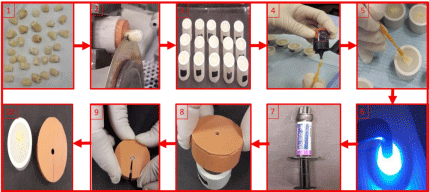
Figure 1: Stepwise flow diagram of sample preparation; (1): Teeth inspection for defects; (2) Removal of enamel to expose dentin by sectioning the teeth; (3)
Embedding teeth in resin in a plastic mold (2 x 2 inch) and surface smoothening; (4,5) Applying adhesive to dentin; (6) Irradiation of adhesive; (7) Fowable composite
packing; (8) Polyvinyl siloxane putty with 3.0 x 3.0 mm (H x D) dimensions positioned on dentin; (9) Filling of Fowable composite for build up; (10) Removal of mold.
Shear bond testing
Specimens were mounted on the universal testing machine (Instron 5965) and the shear force was applied at a crosshead speed of 1.0mm/min through a knife-edge blade using 5kN load cell. SBS was measured in MPa by dividing the peak load at failure with the specimen surface area.
In shear bond tests, actually it is a tensile stress that causes debonding. The results may vary from different studies because, the stress distribution at the interface is very heterogeneous. In addition, it is noteworthy to mention that, the position and configuration of the loading device greatly affect the stress distribution at the bonded interface and as a result may cause variation in the results (Figure 2a). The force that causes debonding of the specimen increases by increasing distance of loading device from the interface due to bending moment of the cylindrical specimen. Therefor to avoid variation in the results and keep consistency, we tried our best to keep the position of the loading device accurate during the course of testing. However, SBS results obtained for a specific material from different studies may not be associated due to variation in the bonding substrate, specimen preparation, storage conditions, and loading method [24].
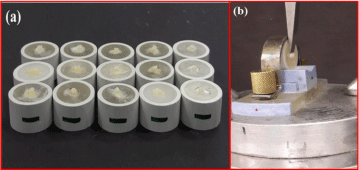
Figure 2: (a) Prepared samples bonded to dentin; (b) Sample mounted for
shear bond strength.
For statistical analysis, independent samples T test was performed to test the Levene’s assumption of homogeneity of variance across both groups, with critical value set at 0.05, using SPSS. The samples mounted on the SBS testing machine are shown in Figure 2b.
Results
Shear bond strength group I and group II
The obtained results for each individual specimen of group I are depicted in Table 2. The mean SBS demonstrated by group I was 17.3 MPa at a maximum mean load of 122N.
Sample No.
Maximum Load [N]
Shear Bond Stress at Maximum Load [MPa]
1
139.9
19.8
2
123.9
17.5
3
137.2
19.4
4
117.1
16.6
5
136.9
19.4
6
120.5
17
7
114.1
16.1
8
125.3
17.7
9
133.9
18.9
10
120.8
17.1
11
111.9
15.8
12
112.6
15.9
13
111.5
15.8
14
105.4
14.9
15
119.1
16.8
Mean
122
17.3
Standard Deviation
10.7
1.5
Table 2: Shear bond strength for Group I specimen (n=15).
Similarly, the results obtained for each individual specimen of group II are depicted in Table 3. The mean SBS demonstrated by group II was 25.2MPa at a mean maximum load of 178.2N.
Sample No.
Maximum Load [N]
Shear Bond Stress at Maximum Load [MPa]
1
168.7
23.9
2
167.1
23.6
3
191.5
27.1
4
194.6
27.5
5
149.5
21.2
6
197.2
27.9
7
205.1
29
8
143.5
20.3
9
191.1
27
10
177.1
25
11
177.8
25.1
12
170.2
24.1
13
192.7
27.3
14
188.4
26.7
15
158.9
22.5
Mean
178.2
25.2
Standard Deviation
18.3
2.6
Table 3: Shear bond strength for Group II specimen (n=15).
The results of the Levene’s test for equality of variances in the SBS of group I and group II are illustrated in Figure 3. The obtained results revealed that the mean SBS of group II is statistically greater than that of group I (critical-value <0.05). Therefore, the null hypothesis is rejected.
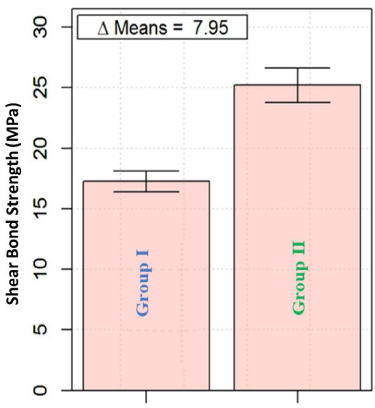
Figure 3: Statistical comparison of mean SBS of group I and group II.
Modes of failure
Figure 4 and 5 presents the fracture patterns for each sample (n=15) for both group I and group II, respectively. Non-cohesive failure was the most dominant mode of failure in Group I. All the samples exhibited non-cohesive failure in group I, except S-3 (Figure 4) which resulted in cohesive failure. On the other hand, mostly cohesive failure was observed for Group II. Adhesive failure was observed for four samples S-2, S-7, S-9 and S-10 (Figure 5) in Group II only, the rest of 12 (S-1 to 6, S-8, and S-11 to S-15) samples exhibited cohesive failure.
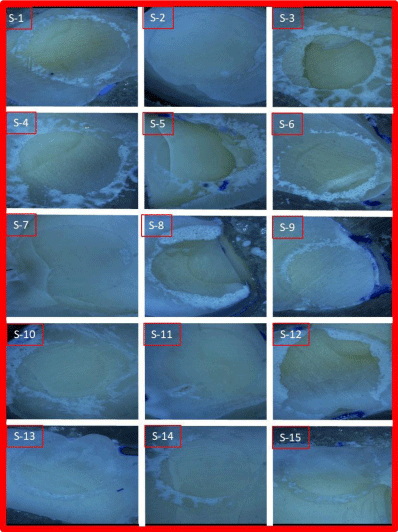
Figure 4: Microscopic analysis of the modes of failure n=15 (Group I).
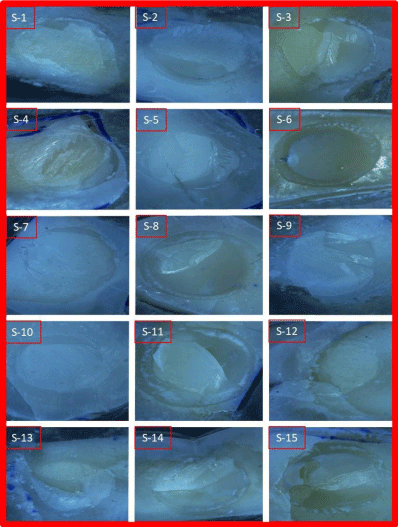
Figure 5: Microscopic analysis of the modes of failure n=15 (Group II).
Discussion
The present study revealed that the mean SBS of conventional flowable resin composite (Filtek Ultimate) is considerably greater than that of SRC (Vertise Flow). Therefore, the first null hypothesis was rejected. The bonding of resin composites to enamel and dentin is carried out by removing minerals from dental hard tissue and replacing it with resin monomers which upon polymerization create micromechanical interlocking in the porosities. The bonding process of VertiseTM Flow depends on the monomer adhesive (GPDM), because due to the presence of the phosphate group, it promotes etching and develops chemical interaction with dental specimens [25]. In current study, the lower bond strength of Vertise Flow may be associated with its limited ability to demineralize and infiltrate dentin substrate, which may result in poor micromechanical interlocking, ineffective sealing of dentinal tubules and poor wetting of dentin collagen fibrils. The self-adhering resin composite should be able to quickly interact with dentin and acquire optimal wetting characteristics in short period of time [26-28]. The bond strength of SRC can be partially related to their chemical interaction with dentin hydroxyapatite [29].
As per manufacturer, there are two ways by which Vertise Flow interact with to tooth surfaces. The first mechanism involves chemical interaction of calcium ions in tooth with the functional phosphate groups in the GPDM monomers (inside resin), whereas the second bonding mechanism occurs as a result of micromechanical etching of the tooth caused by the low pH (pH 1.9) of the resin material, which is analogous to that of numerous self-etching materials [30]. The SBS of VertiseTM Flow has been studied by other researchers with and without using an adhesive. Their results revealed that, with an adhesive system, VertiseTM Flow had greater bond strength values compared to its individual use. They also found that the SBS of a conventional flowable composite: Filtek Ultimate Flow is higher than that of self-adhering resin composite (VertiseTM Flow), which is in line with our current study [30]. The high SBS of Filtek Ultimate could be attributed to the wetting properties of the adhesives to dentin. Previous studies reported that optimum bonding could be achieved by having specific wetting properties of the adhesive resin similar to the conditioned dentin [31,32]. Similar to our study, different in vitro studies revealed that VertiseTM Flow has displayed lower SBS values than all-in-one adhesive, [33] self-etch (two-step) and etch & rinse adhesive systems [34].
It has been observed from microscopic analysis (Figure 4 and 5) that the non-cohesive failure mode was predominantly observed in Group I. However, on the other hand, the most cohesive failures occurred in Group II, which may be attributed to the higher bond strength, forecasting an efficient bonding [35]. In addition, due to the high number of cohesive failure, it could be inferred that the stress distribution is balanced during the mechanical testing of bond strength [36]. Sometimes, the stresses are not homogeneously distributed either due to the uneven surfaces or due to large filler size in the adhesive. It may lead to underestimated values, mixed or adhesive failure.
Conclusion
Within the limitations of this study, the self-adhering flowable composite: VertiseTM Flow had resulted in the lowest SBS as compared with the conventional flowable resin composite (Filtek Ultimate) showing the greater SBS. It could be concluded from the results that reducing the bonding procedures (avoiding etch and rinsing steps), reduces the bond strength. In addition VertiseTM Flow predominantly exhibited non-cohesive failure, which reflects a poor bonding to dentin. Moreover, the low SBS of VertiseTM shows its limited ability to interact with dentin, demineralize it and infiltrate into dentin substrate, which may result in poor micromechanical interlocking ineffective sealing of dentin tubules and poor wetting of dentin collagen fibrils. On the other hand, the conventional flowable composite (Filtek Ultimate) showed mix failure for most of the samples, which demonstrates its favorable wetting properties (due to single bond universal), good chemical interaction with dentin and subsequently resulted in strong adhesive bonding. Further clinical trials are required to evaluate the data acquired, in laboratory on the new self-adhering flowable composites, under clinical situations in dentistry. The in vitro and clinical evaluation will help to improve the performance of VertiseTM Flow for the long-term application of the restorations.
References
- Ben-Amar A, Kaffe I and Gorfil C. Marginal leakage in amalgam restorations and its prevention. Refu’at ha-peh veha-shinayim. 1978; 27: 25-29, 23-25.
- Bektas OO, Eren D, Akin EG and Akin H. Evaluation of a self-adhering flowable composite in terms of micro-shear bond strength and microleakage. Acta Odontol Scand. 2013; 71: 541-546.
- Labella R, Lambrechts P, Van Meerbeek B and Vanherle G. Polymerization shrinkage and elasticity of flowable composites and filled adhesives. Dent Mater. 1999; 15: 128-137.
- Sofan E, Sofan A, Palaia G, Tenore G, Romeo U and Migliau G. Classification review of dental adhesive systems: from the IV generation to the universal type. Annali di stomatologia. 2017; 8: 1-17.
- Vasconcelos e Cruz J, Polido M, Brito J and Gonçalves LL. Dentin Bonding and SEM Analysis of a New Experimental Universal Adhesive System Containing a Dendrimer. Polymers. 2020; 12: 461.
- Kaptan A, KV, Hürmüzlü F, Serper A. Effect of Chemical Irrigants on the Bond Strength of a Universal Adhesive System to Dentin-Enamel Junction and Different Dentin Regions. Clin Med Rev Case Rep. 2019; 6: 285.
- Nagarkar S, Theis Mahon N and Perdigão J. Universal dental adhesives: Current status, laboratory testing, and clinical performance. Journal of Biomedical Materials Research Part B: Applied Biomaterials. 2019; 107: 2121-2131.
- Unterbrink GL and Liebenberg WH. Flowable resin composites as “filled adhesives”: literature review and clinical recommendations. Quintessence Int. 1999; 30: 249-257.
- Korkmaz Y, Gurgan S, Firat E and Nathanson D. Shear bond strength of three different nano-restorative materials to dentin. Oper Dent. 2010; 35: 50-57.
- Sudsangiam S and van Noort R. Do dentin bond strength tests serve a useful purpose? J Adhes Dent. 1999; 1: 57-67.
- Ferdianakis K. Microleakage reduction from newer esthetic restorative materials in permanent molars. J Clin Pediatr Dent. 1998; 22: 221-229.
- Ikeda M, Tsubota K, Takamizawa T, Yoshida T, Miyazaki M and Platt JA. Bonding durability of single-step adhesives to previously acid-etched dentin. Oper Dent. 2008; 33: 702-709.
- Van Meerbeek B, Van Landuyt K, De Munck J, Hashimoto M, Peumans M, Lambrechts P, et al. Technique-sensitivity of contemporary adhesives. Dent Mater J. 2005; 24: 1-13.
- Vichi A, Margvelashvili M, Goracci C, Papacchini F and Ferrari M. Bonding and sealing ability of a new self-adhering flowable composite resin in class I restorations. Clin Oral Investig. 2013; 17: 1497-1506.
- Naughton WT and Latta MA. Bond strength of composite to dentin using selfetching adhesive systems. Quintessence Int. 2005; 36: 259-262.
- Singh K, Naik R, Hegde S and Damda A. Shear Bond Strength of Superficial, Intermediate and Deep Dentin in Vitro with Recent Generation Self-etching Primers and Single Nano Composite Resin. J Int Oral Health. 2015; 7: 28-32.
- Poitevin A, De Munck J, Van Ende A, Suyama Y, Mine A, Peumans M, et al. Bonding effectiveness of self-adhesive composites to dentin and enamel. Dental Materials. 2013; 29: 221-230.
- Wajdowicz MN, Vandewalle KS and Means MT. Shear bond strength of new self-adhesive flowable composite resins. Gen Dent. 2012; 60: e104-e108.
- Giannini M, Makishi P, Ayres APA, Vermelho PM, Fronza BM, Nikaido T, et al. Self-etch adhesive systems: a literature review. Brazilian dental journal. 2015; 26: 3-10.
- Altunsoy M, Tanriver M, Ok E and Kucukyilmaz E. Shear Bond Strength of a Self-adhering Flowable Composite and a Flowable Base Composite to Mineral Trioxide Aggregate, Calcium-enriched Mixture Cement, and Biodentine. Journal of Endodontics. 2015; 41: 1691-1695.
- Naga AA, Yousef M, Ramadan R, Fayez Bahgat S and Alshawwa L. Does the use of a novel self-adhesive flowable composite reduce nanoleakage? Clin Cosmet Investig Dent. 2015; 7: 55-64.
- Makishi P, Pacheco RR, Sadr A, Shimada Y, Sumi Y, Tagami J, et al. Assessment of Self-Adhesive Resin Composites: Nondestructive Imaging of Resin-Dentin Interfacial Adaptation and Shear Bond Strength. Microsc Microanal. 2015; 21: 1523-1529.
- Salerno M, Derchi G, Thorat S, Ceseracciu L, Ruffilli R and Barone AC. Surface morphology and mechanical properties of new-generation flowable resin composites for dental restoration. Dental Materials. 2011; 27: 1221- 1228.
- Chapter 5 - Testing of Materials and Dental Biomechanics, in Craig’s Restorative Dental Materials (Thirteenth Edition), RL Sakaguchi and JM Powers, Editors. 2012 Mosby: Saint Louis. 83-107.
- Goracci C, Margvelashvili M, Giovannetti A, Vichi A and Ferrari M. Shear bond strength of orthodontic brackets bonded with a new self-adhering flowable resin composite. Clin Oral Investig. 2013; 17: 609-617.
- Viotti RG, Kasaz A, Pena CE, Alexandre RS, Arrais CA and Reis AF. Microtensile bond strength of new self-adhesive luting agents and conventional multistep systems. J Prosthet Dent. 2009; 102: 306-312.
- Goracci C, Sadek F, Fabianelli A, Tay F and Ferrari M. Evaluation of the adhesion of fiber posts to intraradicular dentin. Operative Dentistry-University of Washington. 2005; 30: 627.
- Monticelli F, Osorio R, Mazzitelli C, Ferrari M and Toledano M. Limited decalcification/diffusion of self-adhesive cements into dentin. Journal of dental research. 2008; 87: 974-979.
- Gerth HU, Dammaschke T, Züchner H and Schäfer E. Chemical analysis and bonding reaction of RelyX Unicem and Bifix composites-a comparative study. Dental Materials. 2006; 22: 934-941.
- Tuloglu N, Sen Tunc E, Ozer S and Bayrak S. Shear bond strength of selfadhering flowable composite on dentin with and without application of an adhesive system. J Appl Biomater Funct Mater. 2014; 12: 97-101.
- Asmussen E and Uno S. Solubility parameters, fractional polarities, and bond strengths of some intermediary resins used in dentin bonding. J Dent Res. 1993; 72: 558-565.
- Miller RG, Bowles CQ, Chappelow CC and Eick JD. Application of solubility parameter theory to dentin-bonding systems and adhesive strength correlations. J Biomed Mater Res. 1998; 41: 237-243.
- Pacifici E, Chazine M, Vichi A, Grandini S, Goracci C and Ferrari M. Shearbond strength of a new self-adhering flowable restorative material to dentin of primary molars. J Clin Pediatr Dent. 2013; 38: 149-154.
- Juloski J, Goracci C, Rengo C, Giovannetti A, Vichi A, Vulicevic ZR, et al. Enamel and dentin bond strength of new simplified adhesive materials with and without preliminary phosphoric acid-etching. Am J Dent. 2012; 25: 239- 243.
- Titley KC, Chernecky R, Rossouw PE and Kulkarni GV. The effect of various storage methods and media on shear-bond strengths of dental composite resin to bovine dentine. Arch Oral Biol. 1998; 43: 305-311.
- al-Salehi SK and Burke FJ. Methods used in dentin bonding tests: an analysis of 50 investigations on bond strength. Quintessence Int. 1997; 28: 717-723.